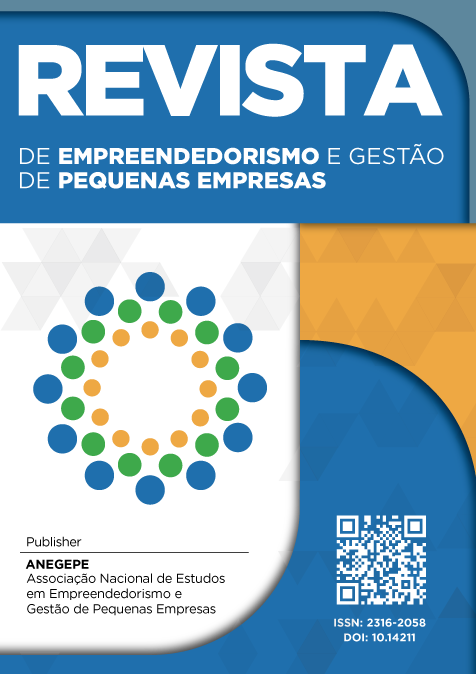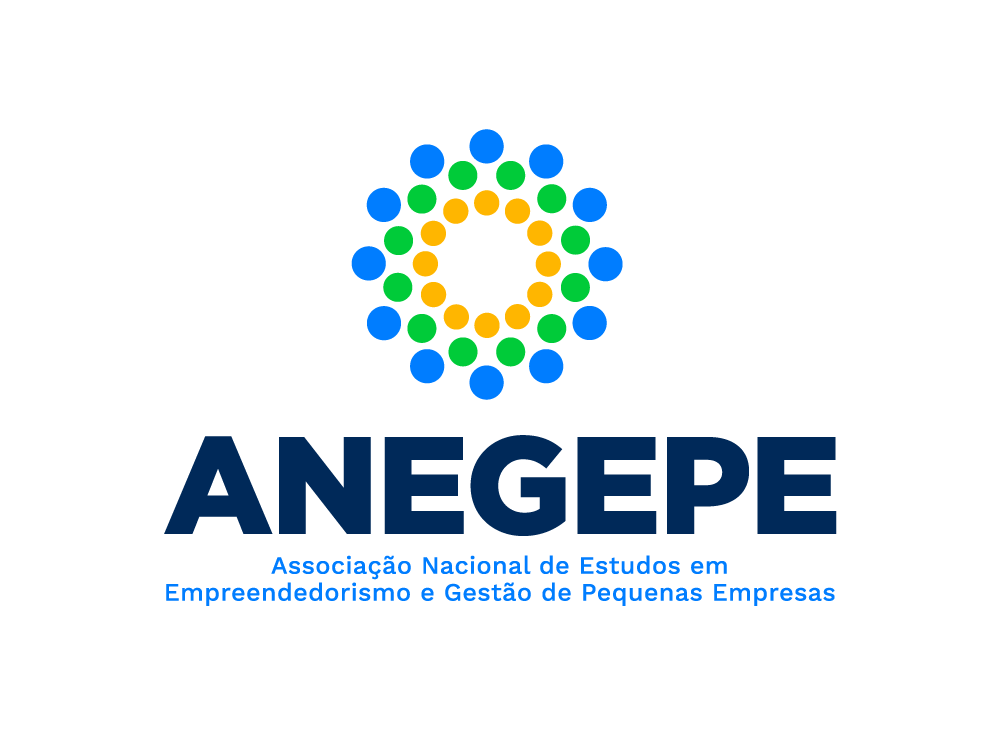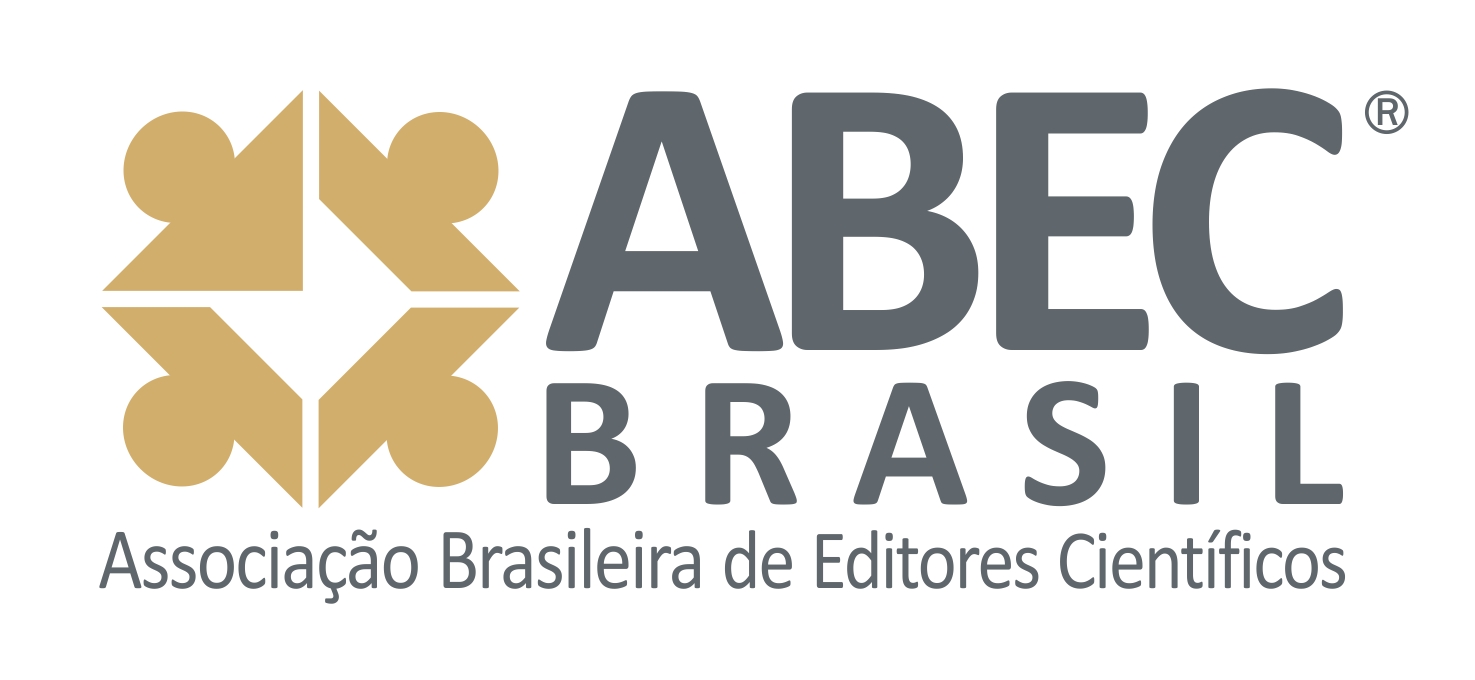Innovative Capacity: An Exploratory Study in Organizations of the Mechanical Metal Segment in the South Brazil
DOI:
https://doi.org/10.14211/regepe.v6i2.554Keywords:
Dynamic Capabilities, Innovative Capacity, Competitive Advantage.Abstract
This study aims to identify, understand and analyze the mechanisms and instruments for the development of innovative capacity. The aim was to describe and analyze the behavior and skills of change and innovation, the processes and routines of search and innovation and the mechanisms of learning and knowledge governance that support the development of innovative capacity. The study was realized in four organizations of the metal mechanic segment, located in the South region of Brazil, that constitutes an important sector in the local and regional productive matrix. The study adopted a qualitative, exploratory, descriptive and multi - case study. Data were collected through semi-structured interviews with the managers of the companies. After, they were studied and analyzed through discourse analysis. The main results showed that the element behaviors and abilities stand out the entrepreneurial behavior, the technological pioneering, the attitude regarding about the need for change, the ability to anticipate trends, market analysis and team daring. Regarding the routines and processes, emphasis is given to the continuous improvement and improvement of processes and the freedom to innovate in products and processes. In relation to the mechanisms of learning and knowledge governance, predominate internal entrepreneurship, the internalization of technology and innovative posture.
Downloads
References
Ambrosini, V., Bowman, C., & Collier, N. (2009). Dynamic capabilities: an exploration of how firms renew their resource base. British Journal of Management, 20, 9-24.
Andrade, M. M. (1999). Introdução à metodologia do trabalho científico. 4. ed. São Paulo: Atlas.
Andreeva, T., & Chaika, V. (2006). Dynamic Capabilities:what they need to be dynamic?St. Petersburg State University. São Petersburgo.
Becker, M. C. (2001). The concept of routines twenty years after Nelson and Winter (1982). Danish Research Unit For Industrial Dynamics.
Birnholtz, J. P., Cohen, M. D., & Hoch, S. V. (2009). Is the 'same'? Observing regeneration ororganizartional character at Camp poplar Grove. In: Becker, M. C.; Lazaric, N.Organizational Routines:Advancing Empirical Research. Cheltenham: EdwardElgarPublishing Ltd., 7, 131-158.
Bygdas, A. L. (2006). Enacting dynamic capabilities in distributed organizational environments. Bergen.
Camargo, A. A. B. (2012). Capacidades Dinâmicas em uma Empresa Secular de Serviços: O Caso Berlitz. Dissertação (Mestrado). Programa de Pós-Graduação em Administração de Empresas da Universidade Presbiteriana Mackenzie. São Paulo.
Cetindamar, D., Phaal, R., & Prostre, D. (2009). Understanding Technology management as a dynamic capability: A framework for Technology management activities. Technovation, 29, 237-246.
Collis, D. J. (1994). Research note: how valuable are organizational capabilities? Strategic Management Journal,143-152.
Creswell, J. W. (2010). Projeto de pesquisa: métodos qualitativo, quantitativo e misto. 3. ed., Porto Alegre: Artmed.
Damanpour, F. (1991). Organizational innovation: A meta-Analysis of Effects of Determinants and Moderators. Academy of Management Journal, 3, 555-590.
Dosi, G., Faillo, M., & Marengo, L. (2008). Organizational Capabilities, Patterns of Knowledge Accumulation and Governance.Organization, Los Angeles, 29, 1165-1185.
Eisenhardt, K. M., & Martin, A. (2000). Dynamic capabilities: what are they? Strategic Management Journal, 21, 10-11, 1105-1121.
Feldman, M. S., & Rafaeli, A. (2008). Organizational routines as a source of connections and understandings.Journal of Management Sciences, Hoboken.
Gerard, J. A. (2011). A Theory of Organizational Routines: Development of a Topology and Identification of Contextual Determinants. Ann Arbor: ProQuest UMI Dissertation
Publishing.
Gil, A. C. (2008). Como elaborar projetos de pesquisa. 5. ed. São Paulo: Atlas, 2008.
Guerra, R. M. A., Tondolo, V. A. G., & Camargo, M. E. (2016). O Que (Ainda) Podemos Aprender Sobre Capacidades Dinâmicas. Revista Ibero-Americana de Estratégia, 15, 1.
Han, J. K., Kim, N., & Srivastava, R. K. (1998). Market Orientantion and Organizational Performance: Is Innovation a Missing Link? Journal of Marketing, 62, 30-45.
Helfat, C., Finkelstrein, S., Mitchell, W., Peteraf, M., Singh, H., Teece, D., & Winter, S. (2007). Dynamic Capabilities: Understanding Strategic Changes In Organizations. Malden: Blackwell Publishing.
Higgins, J. M. (1995). Innovate or evaporate: test & improve your organization’s iq: its innovation quotient. New Management.
Hogdson, M. G. (2009). The nature and replication of routines. In: Becker, M. C., & Lazaric, N. Organizational Routines:Advancing E pirical Research. Norhthampton: Edward ElgarPublishing, Inc.
Holanda Ferreira, A. B. D. (1975). Novo Dicionário da Língua Portuguesa. Rio de Janeiro: Nova Fronteira.
Hult, G. T., Hurley, R., & Knight, G. A. (2004). Innovativeness: Its antecedents and impact on business performance. Industrial Marketing Management, 33, 429-438.
Hurley, R., & Hult. G. T. M. (1998). Innovation, market orientation, and organizational learning: An integration and empirical examination. Journal of Marketing, 62, 42-54.
Ibarra, E. R. B, & Herrera, L. (2009). Capacidad de innovación y configuración de recursos organizativos. Intangible Capital, 5, 3, 301-320.
Kim, W. C., & Mauborgne, R. (1999). Strategy, value innovation and the knowledge economy. Sloan Management Review, 40, 41-53.
Knott, A. M., & Mckelvey, W. (1999). Nirvana Efficiency: a comparative test of residual claims and routines. Journal of Economic Behaviour and Organization, 38, 365-383.
Lawson, B., & Samson, D. (2001). Developing innovation capability in organizations: a dynamic capabilities approach. International Journal of Innovation Management, 5 (3), 377-400.
Lopes, C. E. (2008). Uma proposta de definição de comportamento no behaviorismo radical. Revista Brasileira de Terapia Comportamental Cognitiva, 1, 1-13.
López, S. P., Peón, J. M. M., & Ordás, C. J. V. (2005). Organizational learning as a determining factor in business performance. The Learning Organization, 3, 227-245.
Martins, G. A. (2000). Manual para elaboração de monografias e dissertações. 2. ed. São Paulo: Atlas.
Mckelvie, A., & Davidson, P. (2009). From Resourse Base to Dynamic Capabilities: an investigation of New Firms. British Journal of Management,Oxford, 20, 63-80.
Meirelles, D. S., & Camargo, A. A. B. (2014). Capacidades Dinâmicas: o que são e como identificá-las? RAC, Rio de Janeiro, 18, 41-64.
Menguc, B., & Auh, S. (2006). Creating a firm-level dynamic capability through capitalizing on market orientation and innovativeness. Acad. Mark Sci., 1, 63-73.
Neely, A. D., & Hii, H. H. (1999). The innovative capacity of firms. Report commissioned by the Government Office for the East of England.
Nelson, R. R. (2009). Routines as technologies and as organizational capabilities. In: Becker, M.C.; Natahlie, L. Organizational Routines: Advancing Empirical Research. Cheltenham: Edward Elgar Publishing, Inc., 11-44.
Nelson, R. R., & Winter, S. G. (1982). An Evolutionary Theory of Economic Change.Cambridge: Belknap Press.
Nelson, R. R., & Winter, S. G. (2005). Uma teoria evolucionária da mudança econômica. Campinas: Unicamp.
Popper, M., & Lipshitz, R. (2000). Organizational learning: mechanisms, culture and feasibility. Management Learning, 2, 181-196.
Prodanov, C. C., & Freitas, E. C. (2013). Metodologia do trabalho científico: métodos e Técnicas da pesquisa e do trabalho acadêmico. 2. ed. Novo Hamburgo: Feevale.
Rabechini Jr., R., & Pessoa, M. S. D. P. (2005). Um modelo estruturado de competências e maturidade em gerenciamento de projetos. Revista Produção, São Paulo, 15, 34-43.
Schumpeter, J. (1934). The Theory of Economic Development. Harvard University Press, Cambridge Massachusetts.
Schumpeter, J. A. (1982). Teoria do desenvolvimento econômico: uma investigação sobre lucros, capital, crédito, juro e o ciclo econômico. Tradução de: Maria Silvia Possas. São Paulo: Editora Abril Cultural.
Skinner, B. F. (1965). Science and human behavior. New York, NY: MacMillan.
Soto, W. H. G. (1998). A análise do discurso nas ciências sociais. In: Neves, C. E. B.; Corrêa, M. B. (orgs.) Pesquisa social empírica: métodos e técnicas. Porto Alegre.
Teece, D., & Pisano, G. (1994). The dynamic capabilities of firms: an introduction. Industrial and Corporate Change, 3, 3, 537-556.
Teece, D. J. (2009). Dynamic capabilities & strategic management. Oxford: Oxford University Press.
Teece, D. J., Pisano, G., & Shuen, A. (1997). Dynamic capabilities and strategic management. Strategic Management Journal, 18, 7, 509-533.
Tidd, J., Bessant, J., & Pavitt, K. (2005). Managing innovation: integrating technological, market and organizational change. Chichester: West Sussex, England, John Wiley & Sons.
Tidd, J., Bessant, J., & Pavitt, K. (2008). Gestão da inovação. 3ª. ed. Porto Alegre.
Tigre, P. B. (2006). Gestão da Inovação: a economia da tecnologia do Brasil. 7ª. ed. Rio de Janeiro, Elsevier.
Triviños, A. N. S. (1987). Introdução à pesquisa em ciências sociais: a pesquisa qualitativa em educação. São Paulo: Atlas.
Wang, C. L., & Ahmed. P. K. (2004). The development and validation of the organizational innovativeness construct using confirmatory factor analysis. European Journal of Innovation Management, 7, 303-313.
Wang, C. L., & Ahmed. P. K. (2007). Dynamic capabilities: a review and research agenda. International Journal of Management Reviews, 9, 1, 31-51.
Winter, S. G. (1964). Economic ‘Natural Selection’ and the Theory of the Firm.Yale Economic Essays, 4, 225-272.
Winter, S. G. (2003). Understanding Dynamic Capabilities. Strategic Management Journal, 24, 991-995.
Yin, R. K. (2005). Estudo de caso: planejamento e métodos. 3. ed. Porto Alegre: Bookman.
Yin, R. K. (2010). Estudo de caso: planejamento e métodos. 3. ed. Porto Alegre: Bookman.
Zhou, K. Z., & Wu, G. (2010). Technological Capability, Strategic Flexibility, and Product Innovation. Strategic Management Journal, 31, 547-561.
Zollo, M., & Winter, S. G. (2002). Deliberate Learning and the Evolution of Dynamic Capabilities.Organization Science. 13, 3, 339-351.
Downloads
Published
How to Cite
Issue
Section
License
Authors who publish with this journal agree to the following terms:
1. The author(s) authorize the publication of the article in the journal.
2. The author(s) ensure that the contribution is original and unpublished and is not being evaluated in other journal(s).
3. The journal is not responsible for the opinions, ideas and concepts expressed in the texts because they are the sole responsibility of the author(s).
4. The publishers reserve the right to make adjustments and textual adaptation to the norms of APA.
5. Authors retain copyright and grant the journal right of first publication, with the work after publication simultaneously licensed under a (Creative Commons (CC BY 4.0) that allows others to share the work with an acknowledgement of the work's authorship and initial publication in this journal.
6. Authors are permitted and encouraged to post their work (Submitted version, Accepted version [Author Accepted Manuscript], or Published version [Version of Record]) online, e.g., in any repository, Any website or Author’s homepage , as it can lead to productive exchanges, as well as earlier and greater citation of published work. The REGEPE ask as policy conditions for the Authors to: Must link to published article with DOI. See the Effect of Open Access at: http://opcit.eprints.org/oacitation-biblio.html













